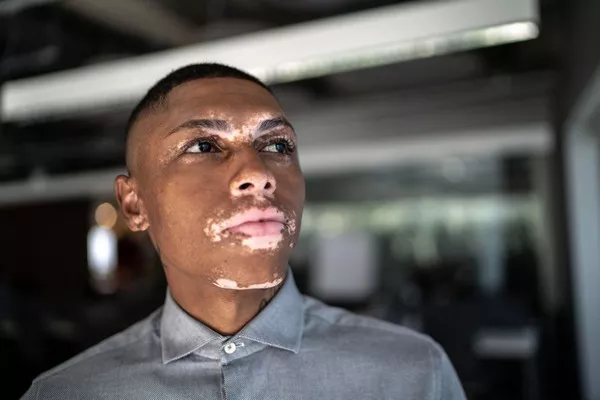Vitiligo is a chronic skin condition characterized by the loss of pigment in certain areas of the skin, resulting in white patches. While vitiligo itself does not cause physical discomfort or increase the risk of skin cancer, individuals with this condition may be more susceptible to sunburns and related complications. In this article, we will explore the potential consequences of sunburn on vitiligo-affected skin and discuss strategies for prevention and management.
Understanding Vitiligo and Sun Sensitivity
Vitiligo occurs when melanocytes, the cells responsible for producing pigment in the skin, are destroyed. This loss of pigment leads to the formation of white patches, which can appear anywhere on the body, including areas exposed to the sun. While the exact cause of vitiligo remains unclear, it is believed to involve a combination of genetic, autoimmune, and environmental factors.
One of the challenges faced by individuals with vitiligo is increased sensitivity to sunlight. The absence of melanin in the affected areas reduces the skin’s natural protection against harmful UV rays, making it more prone to sunburn. Additionally, the contrast between the depigmented patches and surrounding pigmented skin can exacerbate the effects of sun exposure.
The Risks of Sunburn in Vitiligo
Sunburn occurs when the skin is overexposed to UV radiation, leading to inflammation, redness, pain, and in severe cases, blistering and peeling. While sunburn affects individuals of all skin types, it can pose particular risks for those with vitiligo:
1. Increased Risk of Pigmentary Changes: Sunburn can trigger inflammatory responses in vitiligo-affected skin, potentially exacerbating depigmentation or causing hyperpigmentation in surrounding areas. This can further accentuate the contrast between pigmented and depigmented skin, affecting the individual’s appearance and self-esteem.
2. Delayed Healing: The compromised skin barrier in vitiligo-affected areas may impede the healing process following sunburn. Prolonged inflammation and impaired wound healing can increase the risk of infection and prolong discomfort.
3. Heightened Risk of Skin Cancer: While vitiligo itself does not increase the risk of skin cancer, chronic sun exposure and sunburns can elevate the likelihood of developing skin cancers, including melanoma. Individuals with vitiligo should be vigilant about sun protection to mitigate this risk.
SEE ALSO: Does Vitiligo Affect Hair Growth?
Prevention Strategies
Preventing sunburn in individuals with vitiligo involves a multifaceted approach aimed at minimizing UV exposure and protecting the skin. Here are some effective strategies:
1. Sunscreen: The regular application of broad-spectrum sunscreen with a high SPF (Sun Protection Factor) is essential for protecting vitiligo-affected skin from UV damage. Sunscreens should be applied generously to all exposed areas and reapplied every two hours, especially when outdoors or after swimming or sweating.
2. Protective Clothing: Wearing protective clothing, such as wide-brimmed hats, long-sleeved shirts, and UV-blocking sunglasses, can provide additional shielding against UV radiation. Clothing made from tightly woven fabrics offers better protection than sheer or loosely knit materials.
3. Seeking Shade: Minimizing direct sun exposure during peak UV hours (typically between 10 a.m. and 4 p.m.) can reduce the risk of sunburn. Seeking shade under trees, umbrellas, or other structures can provide refuge from intense sunlight.
4. Avoiding Tanning Beds: Tanning beds emit high levels of UV radiation, which can be particularly harmful to individuals with vitiligo. Avoiding indoor tanning practices can help prevent sunburns and minimize the risk of skin damage.
5. Regular Skin Checks: Routine skin examinations by a dermatologist can help detect any changes or abnormalities in the skin, including signs of sun damage or skin cancer. Early detection and treatment are crucial for ensuring optimal skin health.
Managing Sunburn in Vitiligo
Despite preventive measures, sunburns can still occur in individuals with vitiligo. Prompt and appropriate management is essential to alleviate discomfort and prevent complications. Here are some tips for managing sunburn:
1. Cool Compresses: Applying cool compresses or taking cool baths can help soothe sunburned skin and alleviate pain and inflammation.
2. Hydration: Drinking plenty of water can help hydrate the skin and promote healing from within. Moisturizing lotions or creams can also help replenish lost moisture and prevent excessive dryness.
3. Topical Treatments: Over-the-counter hydrocortisone creams or aloe vera gel can provide relief from itching and inflammation associated with sunburn. However, individuals with vitiligo should exercise caution when using topical treatments to avoid further depigmentation.
4. Avoiding Further Sun Exposure: Following a sunburn, it is crucial to avoid further sun exposure until the skin has fully healed. This allows the skin to recover without additional damage.
5. Consultation with a Dermatologist: If sunburn symptoms are severe or persistent, or if there are concerns about skin changes, consulting a dermatologist is recommended. A dermatologist can provide personalized recommendations and interventions based on individual needs.
Conclusion
Sunburn can pose significant risks for individuals with vitiligo, potentially exacerbating depigmentation, delaying healing, and increasing the risk of skin cancer. Understanding these risks and implementing effective sun protection strategies are essential for maintaining skin health and minimizing complications. By adopting preventive measures and promptly addressing sunburn when it occurs, individuals with vitiligo can enjoy greater comfort and confidence in managing their condition.
Related Topics:
























